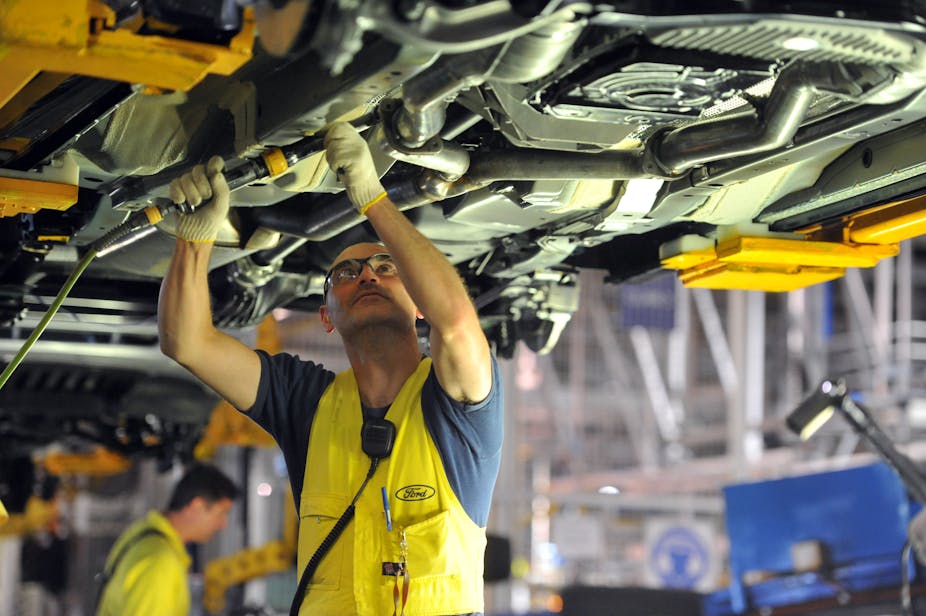Toyota’s announcement yesterday that it will shed 350 jobs at its plant in Altona has been blamed on the strength of the Australian dollar, which some commentators say is having a significant impact on the manufacturing industry’s capacity to remain globally competitive.
Minister for Manufacturing Kim Carr today ruled out government intervention to manipulate the value of the dollar. The Aussie was trading at $US1.05 this morning.
Professor Roy Green, the dean of business at the University of Technology, Sydney, argues that it’s not all doom and gloom. He believes the key to the industry survival’s depends on innovation and ensuring business models can adapt to the ebb and flow of economic change.
How has Australia managed to sustain a high exchange rate for so long?
In some respects, we have not been able to sustain it because as we’ve seen, some of the areas that are trade exposed — exporters or companies competing with imports — have had to downsize or, in some cases, go out of business. But largely — and perhaps surprisingly — many businesses have managed to make the adjustment. They’ve done so in many ways: some by reducing their margins; others by undertaking incremental innovation and quality improvement; and some — a minority perhaps — by reinventing their business model and introducing new technology and skills.
When you mention trade-exposed industries, you’re speaking of manufacturing, tourism?
Manufacturing, tourism, even retail to a degree, because as we’ve seen, retail is now exposed to the internet. A number of major retailers are beginning to complain. Many of those margins, historically, have been very high.
And to meet those margins, some companies have had to resort to cost-cutting measures, such as reducing labour?
Yes, in some cases. There are three responses. The first is cost cutting, by layoffs and downsizing. Another way is by improvements in quality, paying attention to lean methods of production.The third way is by overhauling the business model. Some companies have understood the business message and begun to apply it by thinking creatively.
Are there certain sectors in particular that have embraced the innovation message more than others?
Almost any sector can embrace that innovation message, whether they’re high-tech — areas like medical instruments — or whether they’re low or medium-tech, which is the bulk of Australian manufacturing. It also applies to services sectors such as tourism, who have to think of new ways of attracting people — they can’t just rely on price.
Australia is not unusual case in this respect. There are other countries that have experienced high exchange rates over many years — the Nordic countries, for example. They’ve learnt to operate in a high exchange rate environment and a high-wage environment by the way they undertake business and, in particular, by focusing on quality, design, branding, participation in global markets and supply chains. We can be good at these things too.
One should not underestimate the significance of design and branding. Countries like Denmark have made design the leading edge of their success and competitiveness in global markets.
What is the outlook for our exchange rate and, if it stays high, what are the long-term consequences?
The question that’s being asked is to what extent is the high dollar a temporary aberration. It could be, because it depends on the commodities cycle and, in the longer term, the dollar may return to the 75 to 80-cent mark, which would certainly improve the competitive position of many organisations and firms.
But we cannot be sure about this. It is a commodities cycle, and it will probably come to an end at some point — but we don’t know when. It depends very much on international factors, on how important our resources-based industries are to China and the emerging economies of East Asia over a long period of time.
But I don’t think we can bank on the high dollar being a temporary aberration. I think we have to make the adjustment now and assume that in the longer term, competitive conditions are going to be much tougher. This will be essential if we want to retain a balanced and diversified economy.
Experience around the world shows that constant innovation, strategic repositioning and organisational agility will be the key to success.

